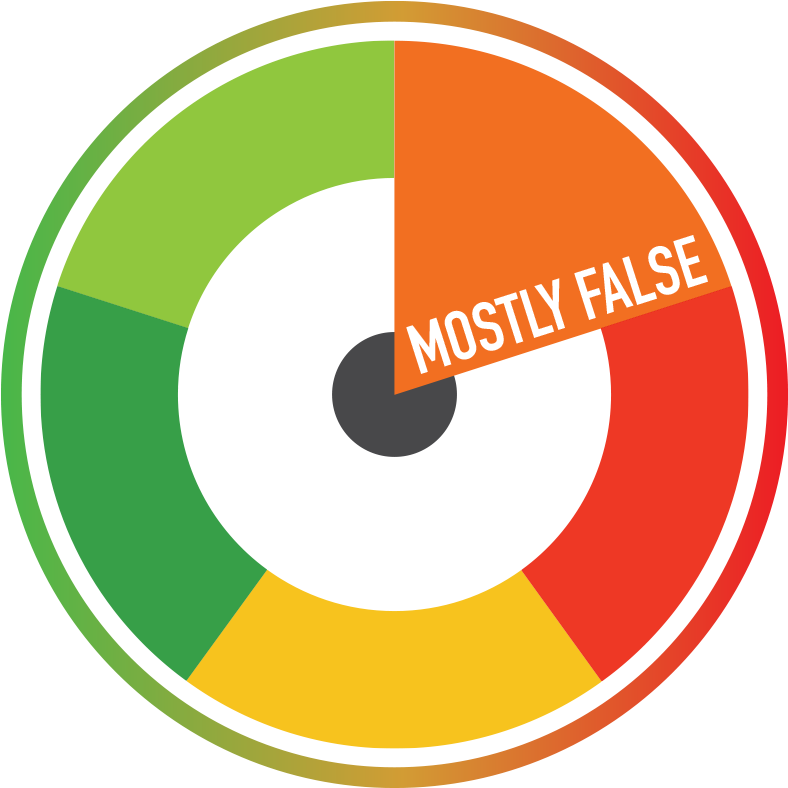In a recent publication on the opinion page of the Dutch newspaper De Volkskrant, historian Ronald Havenaar tries to combat rising cultural pessimism in Europe by pointing to average voter turnouts of between 70 and 80 percent. We rate the claim as mostly false.
According to Havenaar, high voter turnout is indicative of ‘a solid foundation, something current doomsday thinkers fail to recognize’. An average turnout of up to 80 percent is indeed impressive, but does the statistic hold up?
Source
The article is a prepublication of the historian’s latest book, Naar de bliksem, maar nu nog niet (‘Going to hell, but not yet’), published on 7 February. The claim is repeated in the book and provides a source book (Ruling the Void by Peter Mair), which states that the average turnout across western Europe fell from 81.7 percent to 77.6 percent in the 1990s, and to 75.8 in the 2000s. But this is the average in western Europe, so is a limited statistic, and it’s the average between 2000-2010. That might not be long ago, but as the source book points out: ‘The more recent the elections, the more likely they are to record troughs in participation.’ That’s why it’s crucial to use the most recent turnout statistics.
Databases
The source book itself uses multiple sources to back up the statistics: two books from 2002 (which will lack recent turnout numbers), and multiple online election databases that are managed by various organizations: Parlgov, a website run by the University of Bremen keeps track of European election statistics. The Inter-Parliamentary Union, an international partnership of parliaments, also keeps track of those numbers. And there’s the International IDEA, which supports the development of democracies around the world. The latter has a voter turnout database with elaborate turnout statistics. International IDEA usually pulls its statistics directly from national reports and official announcements. We used these databases to calculate the most recent average voter turnout at national elections (our calculations can be downloaded here).
According to these statistics, average voter turnout in Europe is 64.9 percent. That’s between 5.1 and 15.1 percent lower that the claimed 70 to 80 percent. The average for western Europe is 71,9%.
A report from International IDEA from december 2016 also shows that there has been a steady decline in European voter turnout since the end of the 1980s, which amounts to around 20 percent. It is a worldwide phenomenon, but the decline in Europe is greater than in other parts of the world. Around 1995 the average turnout dipped below 70 percent.
Established vs. post-communist
Furthermore, the report distinguishes between ‘established European democracies’ like Denmark and Spain, and ‘post-communist countries’ like Hungary and Serbia. The reason for the distinction is because voter turnout in the second category is declining faster than in the first one. ‘The decline in Europe is disproportionately due to the sharp fall in voter turnout in the post-communist countries’, the report states. The established European democracies show a decline of 10 percent, which is half of the continent’s average.
Causes
The report provides a number of explanations for the declining numbers. For instance, the enthusiasm for elections may be higher in a ‘new’ democracy and slowly decrease for subsequent elections. General disappointment in the democratic system could also be at play. Into the Void, Havenaar’s source book, states other possible causes, like generational shifts and ‘sheer boredom’. These are possible factors; the report is not able to give a definitive answer.
Conclusion
In his publication, Havenaar argues that Europe is stronger than we might think and that there is no reason to be drawn into doomsday scenarios. One of his arguments is the high turnout at national elections. But although the turnout is still not unsubstantial, the statistic seems to be a bit too optimistic.
Leave your comments, thoughts and suggestions in the box below. Take note: your response is moderated.





